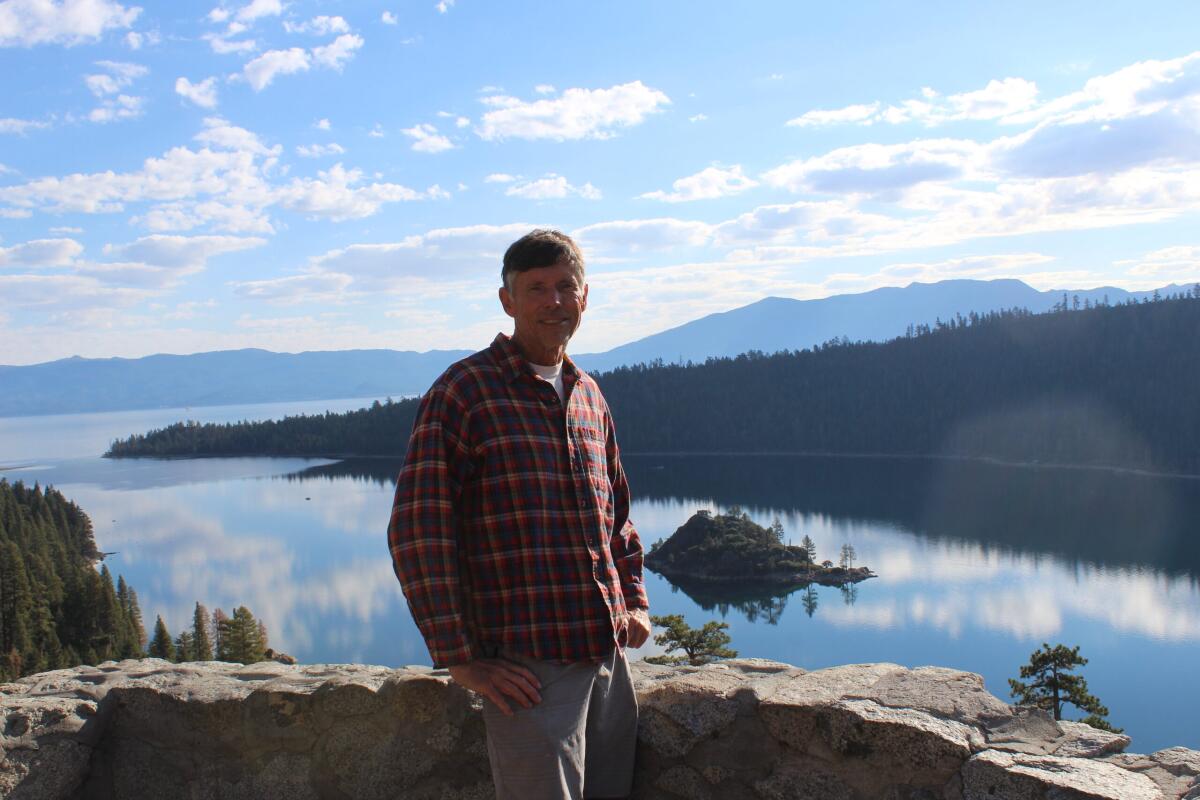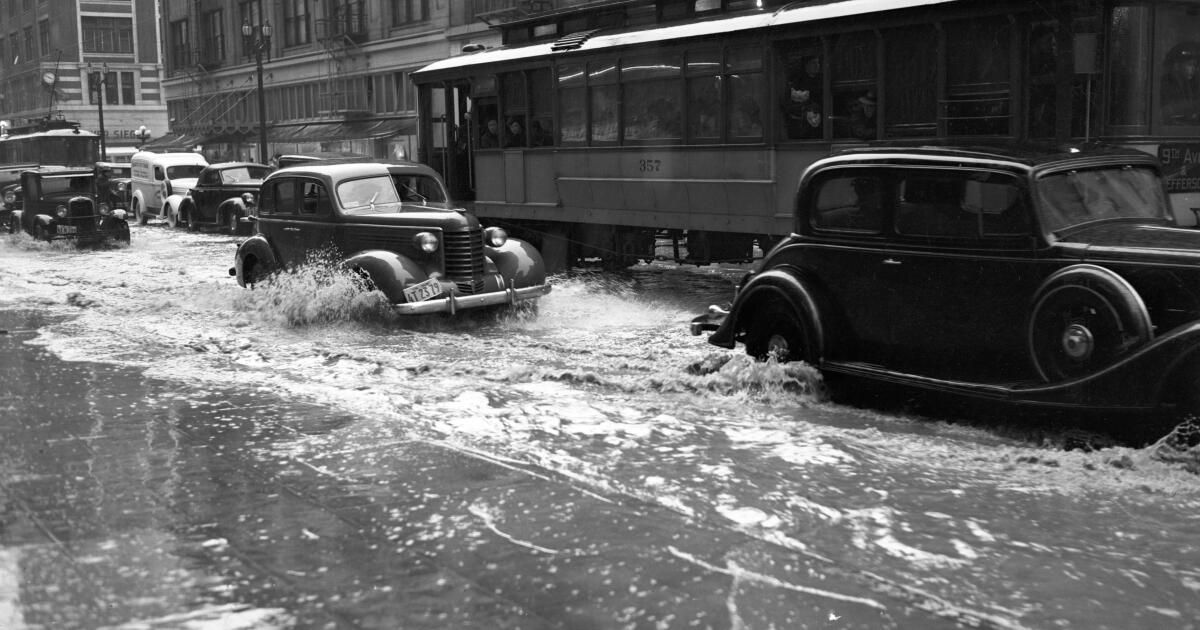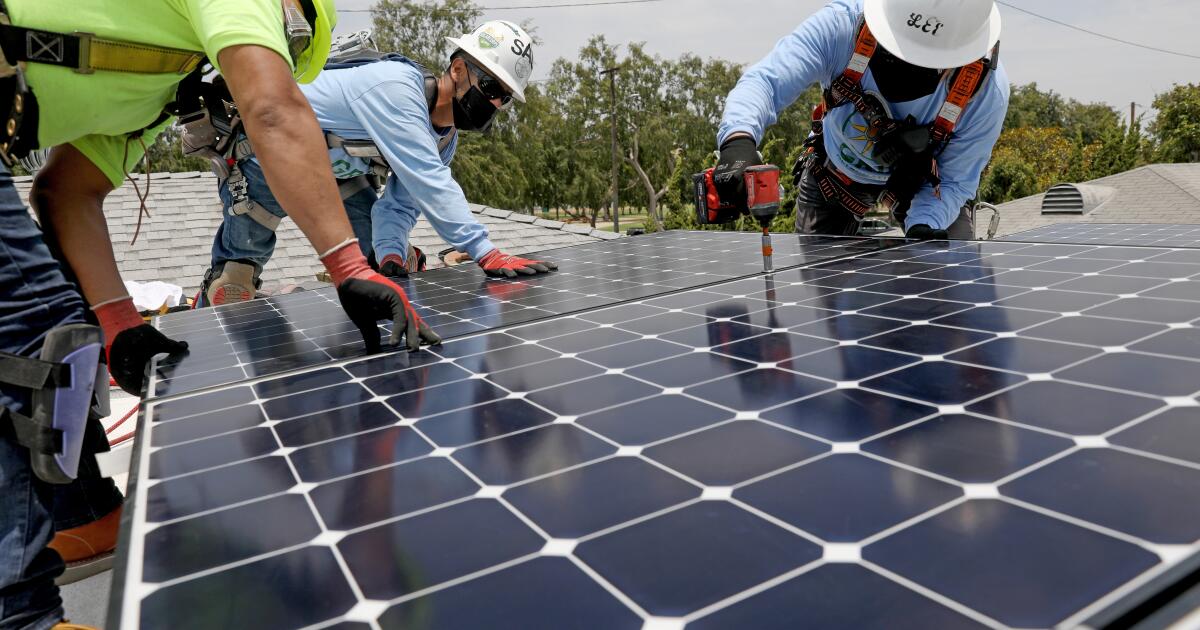Book Review
California Sky Watcher: Understanding Weather Patterns and What's Next
By William A. Selby
Heyday Books: 384 pages, $30
If you purchase books linked on our site, The Times may earn a commission from Bookshop.org, whose fees support independent bookstores.
Last winter, my wife and I were driving back to Los Angeles from Mammoth when our car began to drift out of the lane boundaries as dust devils rose from the desert floor. We were in the middle of a windstorm in the Antelope Valley.
An 18-wheeler truck barely visible about 100 meters ahead of us suddenly overturned. By the time we made it through the storm, we had counted at least a dozen more semi-trailers lying on the shoulder like overturned cows.
What had caused such violent winds? Had we missed some warning sign? Was such a strange weather phenomenon really so common?
William A. Selby’s comprehensive account of California’s varied weather phenomena, numerous microclimates, and seasonal extremes, “The California Sky Watcher: Understanding Weather Patterns and What Comes Next,” solves many of those mysteries of the climate that is created—and created by—the state’s landscape and civilization.
Selby, who grew up in Santa Ana, is a retired Santa Monica College professor who has done research for the National Weather Service. His latest book, packed with helpful, dizzying and sobering diagrams and photographs, could easily serve as a text for a college earth science course. It takes a completely empirical approach to California's four seasons and their manifestation in its myriad topographies.
Selby makes high demands on his readers from the start: In the introduction, he offers a primer on the fundamental physics of atmospheric science, suggesting that most of what follows won’t make much sense without it. Some readers may unpleasantly recall the days when they were graded on their ability (or inability) to grasp such concepts. But those who make the effort to read the book’s occasional pedantry (often about negotiations between air masses and geographic formations) will come away with a better appreciation for the epic forces that contribute to California’s alternately eerie, chaotic, and idyllic weather. And those more familiar with the state’s unique climate will be more likely to share Selby’s fascinations.
The science here is most compelling as Selby spins thermal plumes, updrafts, trade winds and cloud formations into a story of California's cities and often man-made geography. He follows an annual pattern of winter cyclones from the North Pacific to Orange County to tell the story of the Flood of 1938The consequences of which are still evident today. Up to 30 inches of rain in less than a week led to more than 100 deaths and a flurry of flood control measures, an overreaction that paved over river channels and washed away Los Angeles’s riparian habitats (and didn’t even solve the flooding problem). To this day, we continue to spend money to remove that concrete and restore lost riparian ecosystems.
Selby aims not only to explain the science of the state's climate, but also to demonstrate its ever-present influence on our history and society. His examples range from everyday comedy to outlandish criminality.
He laments, for example, how the fog and swirling winds of the San Francisco summer led to four decades of disastrously entertaining Giants baseball, characterized by frozen fans and balls thrown unexpectedly off course. The franchise moved from windswept Candlestick Point to a hillside-protected basin in 2000, and eventually began winning championships.
The state’s climate has also influenced its industry, including the less legal sectors. In Northern California’s Emerald Triangle, known for its marijuana plantations, clandestine cannabis growers have taken advantage of heavy rains and dense forests to illegally divert waterways. The idea may seem comical at first, but these criminals have poisoned natural ecosystems with chemicals and even murdered civilians and bandits perceived as threats.
Selby thus links the state's climate to its people (who may act in accordance with it or, more interestingly, in defiance of it), offering a respite from the book's more arid passages.
Her greatest gift to readers is revealing the weather as an indomitable equalizer. She consults such great wordsmiths as Joan Didion, Joni Mitchell, and Annie Dillard to convey the fear and awe that California’s weather inspires. Patience and perseverance through the book’s atmospheric science pays off: When Selby concludes, “Earth’s natural rhythms, cycles, and systems will always govern our lives in the long run,” we know how true this is. And a skywatcher should wax philosophical from time to time.
In the book’s final chapter, on climate change, Selby juxtaposes the early settlers’ primitive or nonexistent means of forecasting the weather with today’s astonishing technologies. He notes that although more and more Californians live in disaster-prone areas, the number of lives lost to weather-related disasters has declined, thanks in part to the availability of such information. If I ever took my weather app for granted, I won’t be doing so again anytime soon.

Now, let's talk about that windstorm. A relatively stable air mass blows from southwest to northeast over the Transverse Ranges north of Los Angeles. That air rushes down the north side of the mountains as if on a roller coaster, reaching such speed that it drops below its equilibrium level and hurtles across the desert floor. To compensate for this sudden change, the winds turn back toward the mountains and mix with the remaining stable air mass, creating oscillations that give life to dust storms.
As dramatic and terrifying as it was to experience, it is a phenomenon that occurs every year and wreaks havoc across the desert. Fortunately, we made it back safely to Los Angeles, where we had a windless day with temperatures of 16°C in the middle of February. Look at the Golden State!
Daniel Vitale is a Los Angeles-based writer and author of the novel “Orphans of Canland.”












